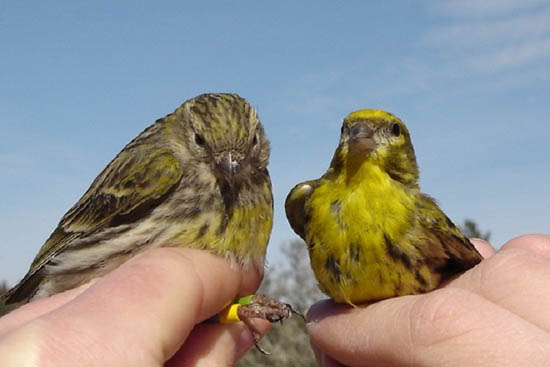 It was already known that the milheira (serinus serinus), a very abundant bird species in Portugal, prefer to mate with colored males, ignoring the rest. Now, a study developed by two researchers at the University of Coimbra (UC) reveals why.
It was already known that the milheira (serinus serinus), a very abundant bird species in Portugal, prefer to mate with colored males, ignoring the rest. Now, a study developed by two researchers at the University of Coimbra (UC) reveals why.
This study helps to understand the evolution of coloration based on carotenoids in many animal species.
Successive experiments, carried out over 18 months within the scope of a research project funded by the Foundation for Science and Technology (FCT), with the aim of understanding why coloring is such an important sexual stimulus for milheirinhas, showed that the most colorful males are also the healthiest.
«We found that the milheiras choose the most colorful males because color is an indicator of quality in terms of health», emphasizes the coordinator of the study already published in Behavioral Ecology and Sociobiology, Paulo Gama Mota.
The experiments were carried out with wild birds captured in Baixo Mondego (returned to nature after completion of the research), divided into two groups.
The researchers began by studying several variables that would allow them to determine what distinguishes the most colorful males, subjecting a group of birds to a diet rich in carotenoids (responsible for the color) and another to a diet without the presence of this substance.
After a few months it was observed that 'birds exposed to a diet rich in carotenoids had a stronger immune system'. In the reproductive cycle, all males were placed in contact with the milheira, who had no hesitation in choosing the most colorful and healthy ones.
It was also found that 'color increases with age', demonstrating that more experienced birds seek out foods rich in carotenoids because they know it is important for their health. From the point of view of the evolution of species, this study helps to understand how environmental changes can affect the health of birds», concludes the professor at the Faculty of Science and Technology of the University of Coimbra (FCTUC).
Author: Cristina Pinto (Press Office – University of Coimbra)
Science in the Regional Press – Ciência Viva


















Comments